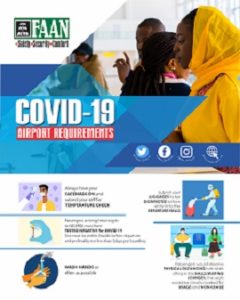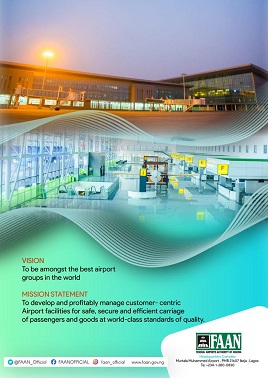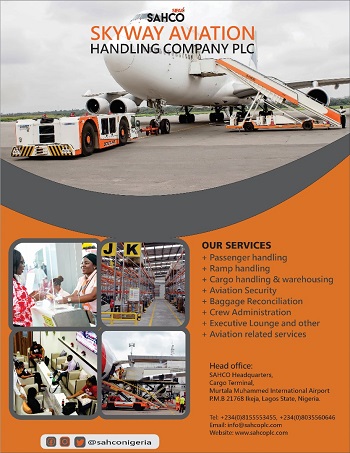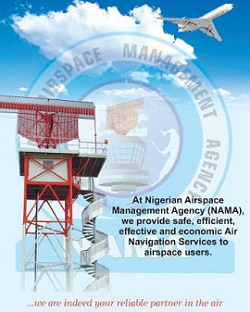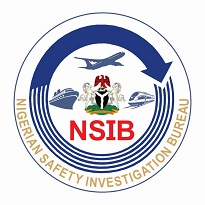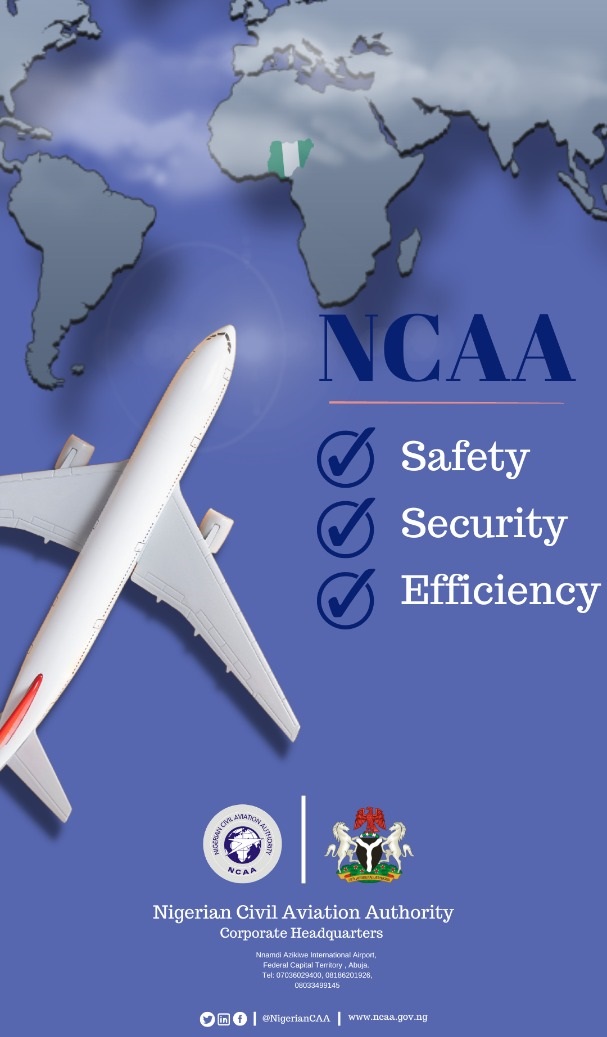
The Accident Investigation Bureau ( AIB-N) has released the final reports on four of air crashes and serious incidents that occurred in the country just as it issued nine safety recommendations to prevent the reoccurrence of such incidences in the future.
Speaking at the media briefing held at AIB headquarters at Nnamdi Azikwe International Airport, Abuja, Commissioner AIB-N, Engr. Akin Olateru reiterated that the purpose of accident investigation is not to apportion blame or liability but to prevent future recurrence of similar incidents.

He recalled that with the release of the four additional reports, AIB-N has so far released a total of 54 final reports since its establishment in 2007 and a total of 35 final reports have been released from the inception of the current administration of the Bureau.
He added that with the nine safety recommendations released on Tuesday, a total of 196 Safety Recommendations have been released from the inception of AIB-N while a total of 115 Safety Recommendations released under present administration.
The four reports, according to Olateru, were those involving a Tampico TB-9 aircraft owned and operated by Nigerian College of Aviation Technology (NCAT) with nationality and registration marks 5N-CBJ, which occurred at Zaria Aerodrome, Kaduna State on September 26, 2018;
Report on the accident involving a Boeing 737-282 aircraft owned and operated by Chanchangi Airlines Ltd with nationality and registration marks 5N-BIG, which occurred at Port Harcourt International Airport on July 14, 2008;
Report on the accident involving a Beechcraft C90 aircraft with nationality and registration marks N364UZ owned and operated by Shoreline Energy Intl Ltd, which occurred at Barakallahu Village near Old Kaduna (Military) Airport on May 24, 2011; and report on the accident involving a Boeing 747-200 Aircraft operated by Veteran Avia Airlines Limited with nationality and registration marks EK-74798, which occurred at Nnamdi Azikiwe International Airport Abuja on December 4, 2013.
On the accident of involving a Tampico TB-9 aircraft owned and operated by Nigerian College of Aviation Technology (NCAT) with nationality and registration marks 5N-CBJ, which occurred at Zaria Aerodrome, Kaduna State on September 26, 2018; AIB identified the causal factor as late decision to initiate a go-around after touchdown which resulted in loss of directional control of the aircraft after landing while it indicated that the contributory factors to accident include: inappropriate control inputs during landing roll and Intermittent interruptions in training program
It therefore made a safety recommendation that NCAT should ensure that where there are gaps in student pilots’ training, Policies and Procedures should be put in place in the training programme so that the students are brought up to speed in both theory and practice.
On the accident involving a Boeing 737-282 aircraft owned and operated by Chanchangi Airlines Ltd which occurred at Port Harcourt International Airport on July 14, 2008; AIB identified the main causal factor as the decision of the pilot to land following an unstabilized approach (high rate of descent and high approach speed). A go-around was not initiated.
While the Bureau identified the contributory factors as: 1 The deteriorating weather conditions with a line squall prevented a diversion to the alternates.
2.The runway was wet with significant patches of standing water, it however did not make any safety recommendations on the incident
“In view of the issuance of the Nigeria CAR 2009 and the revision in 2015, which addressed the areas of shortcomings identified in this investigation, no safety recommendations are made,” AIB said.
On the third incident, that is, the accident which involved a Beechcraft C90 aircraft owned and operated by Shoreline Energy Intl Ltd, which occurred at Barakallahu Village near Old Kaduna (Military) Airport on 24th May, 2011; Olateru said investigations revealed that the causal factor noted were the
Inability of the pilot to control the aircraft to landing due to inadequate power to enable the pilot maintain the appropriate approach profile (height, speed and glide path) to cover the required distance to threshold.
The investigation also identified some contributory factors to the crash to include:
Non-adherence to approved storage procedure
Non-adherence to approved return from storage procedure
Inadequate regulatory oversight by the authority on flight operation and maintenance of foreign registered aircraft in Nigeria
Four safety recommendations were however made
4.1 Safety Recommendation 2020-017
Nigeria Civil Aviation Authority NCAA should increase safety oversight on foreign registered general aviation aircraft operating in Nigerian airspace.
4.2 Safety Recommendation 2020-018
Nigeria Civil Aviation Authority NCAA should promulgate detailed regulations/requirements on private category aircraft operations.
4.3 Safety Recommendation 2020-019
Nigeria Civil Aviation Authority NCAA should liaise with the Old Kaduna (Military) Airport authorities to ensure that 1000 m beyond RWY 23 should be easily accessible in accordance with internationally accepted standard stipulated in ICAO Annex 14.
4.4 Safety Recommendation 2020-020
Nigeria Civil Aviation Authority NCAA should liaise with the Old Kaduna (Military) Airport authorities to ensure that an Airport Emergency Plan (AEP) is developed and maintained in line with Nig.CARs Part 12 (Aerodrome Regulations).
Finally, the report on the accident involving a Boeing 747-200 Aircraft operated by Veteran Avia Airlines Limited which occurred at Nnamdi Azikiwe International Airport Abuja on December 4, 2013.AIB’s investigation identified the failure to update the crew with the information available on the reduced runway length as the causal factor while the it identified the contributory factors as:
Lack of briefing by Saudia dispatcher during pre-flight.
Runway status was missing from Abuja ATIS information.
Ineffective communication between crew and ATC on short finals.
The runway markings and lighting not depicting the displaced threshold
The entire runway lighting was ON beyond the displaced threshold
It therefore recommended four safety recommendations
4.1 Safety Recommendation 2020-014
Nigerian Airspace Management Agency (NAMA) should:
Capture all essential information on the Automatic Terminal Information Services (ATIS).
4.2 Safety Recommendation 2020-015
Federal Airports Authority of Nigeria (FAAN) should:
Ensure that light at any displaced portion of the runway be switched off so as not to mislead any arriving/landing traffic.
4.3 Safety Recommendation 2020-016
Federal Airports Authority of Nigeria (FAAN) should:
Ensure that runway obstructions, and/or runway displaced thresholds are marked/lit in accordance with DNAA Airside Operations Manual and Aerodrome Manual sections 4.10.7a and 4.13.3.4 respectively and communicated on time through NOTAMs to stakeholders.
Safety Recommendation 2020-021
Veteran Avia should ensure that its operations are in conformity with the approved procedures established in accordance with company manuals.
The AIB-N CEO who said timely release of reports have been crucial to the delivery of the Bureau’s mandate of investigating air accident and serious incidents with the aim of forestalling such occurrence from reoccurring, added, “These reports are the strong foundation on which the safety of the aviation industry is built and timely release of these reports is as critical as accident investigation itself.” Also gave nine safety recommendations that would help the industry to boost its safety profile even as he promised to release three more reports before the year ends.
